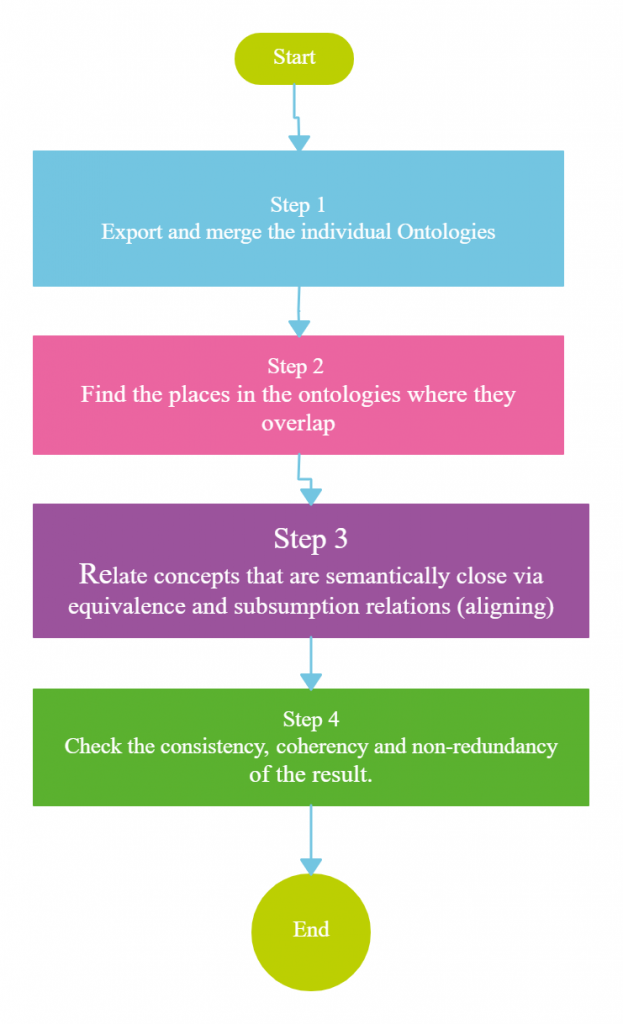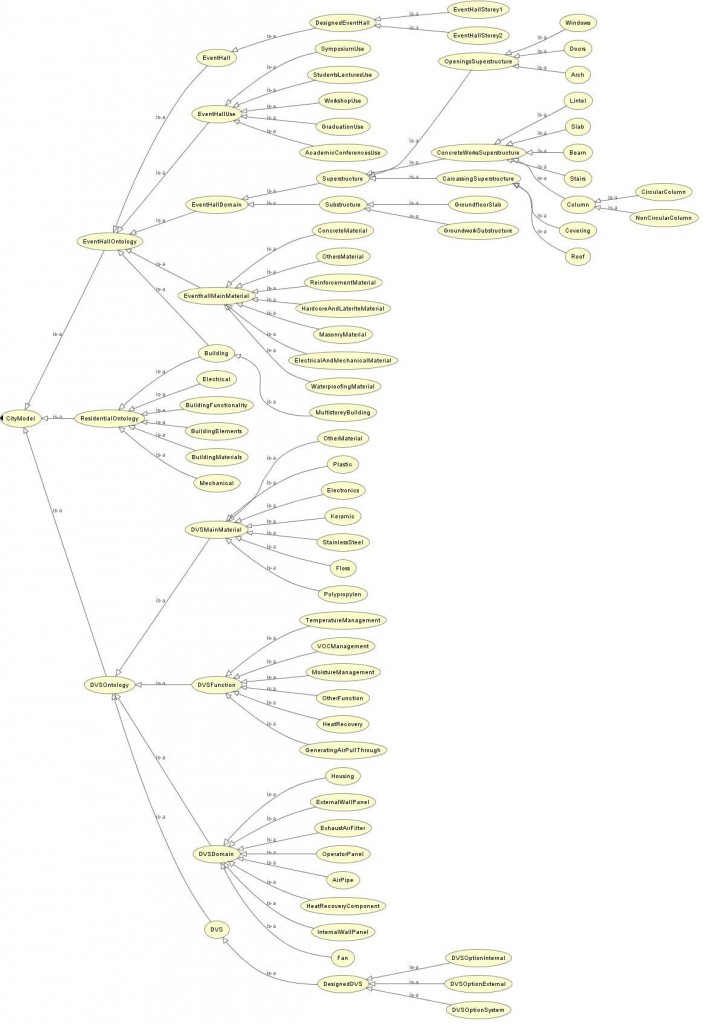Introduction
Interoperability and integration are some of the rationale behind ontology integration. This means that they are aligned and brought into mutual agreement. For this study, the integrated system is termed a city model. It is the amalgamation of commercial and residential buildings which has a decentralized ventilation system embedded in each.
Methodology
Ontology integration requires the integration of some Steps. According to the study of Noy & Mcguinness, (2001), the steps used for the combined ontology in this study is represented in the figure below:
Figure 1: Methodology for the combined ontologies
Result
The individual ontologies were ontologies for event hall, residential building, and decentralized ventilation system (DVS). The event hall and residential buildings have similarities in terms of domain, elements, users, and materials. On the other hand, DVS was entirely different. Therefore, the major goal was to have a city model that combines DVS in a residential building, as well as DVS in an Event hall (commercial building). To achieve the stated above, the new ontology was rearranged. The data and object properties were aligned to adequately depict the city model though classes and class siblings. The ontology arrived at using Protégé is represented in figure 1 below:
Figure2: Combined Ontology
Challenges/ Limitation of the study
There were some limitations to the ontology. Firstly, there were challenges to the use of individual ontologies when combined. This agrees with Gómez Pérez et al., (2001) that there are several problems when attempting to individually develop ontologies or when existing ontologies are adapted for new purposes. To address this problem, it is recommended that ontologies are designed from the scratch.
We can summarize our limitations into 2 main topics; (i) technical limitation, (ii) conceptual limitation.
Technical Limitation: Even if the utilized program offers such integration ways, there would be some inferring classes, subclasses, objects properties and even data properties. This situation brings us to overlapping or missing class, objects, data, and individuals. To avoid the overlapping, we examined three ontologies (which are intended to merge) if they have the same properties. Another technical limitation is the setting of a new relation between the different ontologies; thus, our purpose has been determined very clearly before merging.
Conceptual Limitation: In this limitation, we consider the building style of ontologies. Indeed, the event hall and residential building ontologies have some common concepts; however, they were different from each other in this study. The difference came from the conceptual differences among the designers.
For Download, please click below:
References
Gómez Pérez, A., Gruninger, M., Stuckenschmidt, H., & Uschold, M. (2001). Proceedings of the IJCAI-01 Workshop on Ontologies and Information Sharing (Vol. 5).
Noy, N. F., & Mcguinness, D. L. (2001). Ontology Development 101: AGuide to Creating Your First Ontology.
Back to Group 5:

